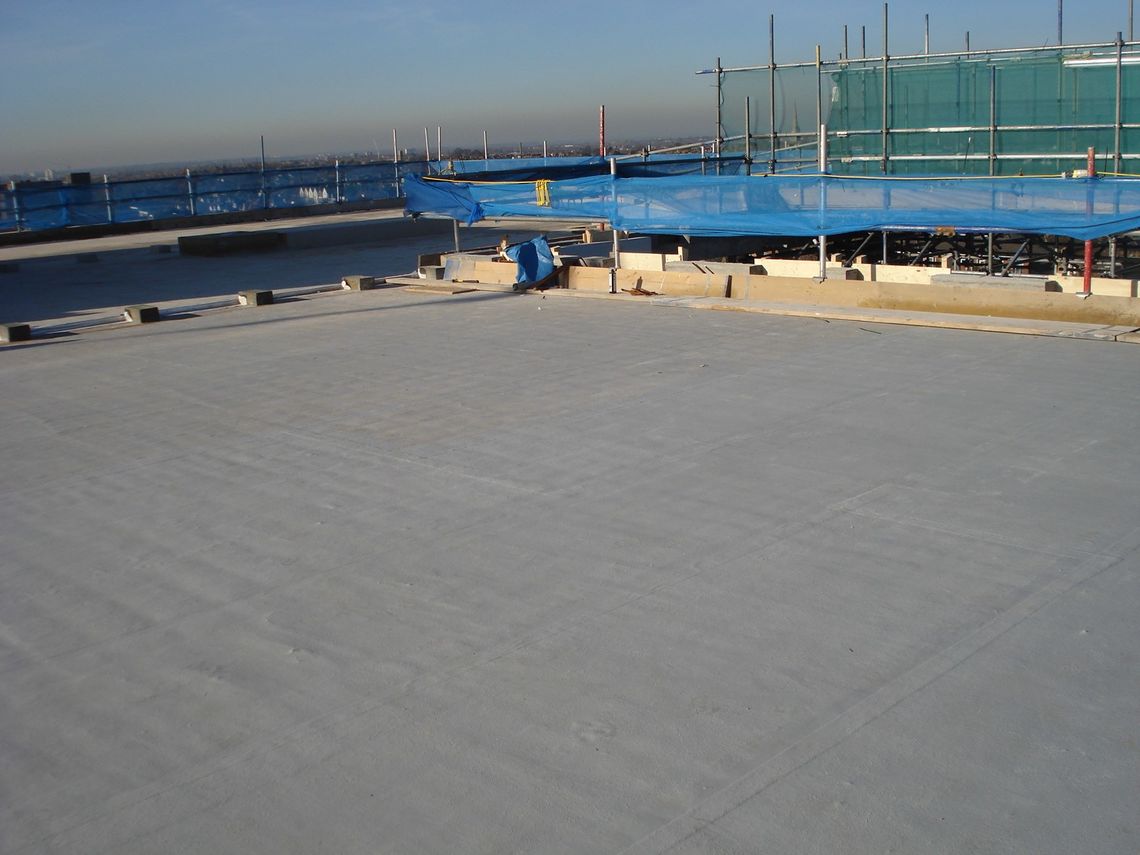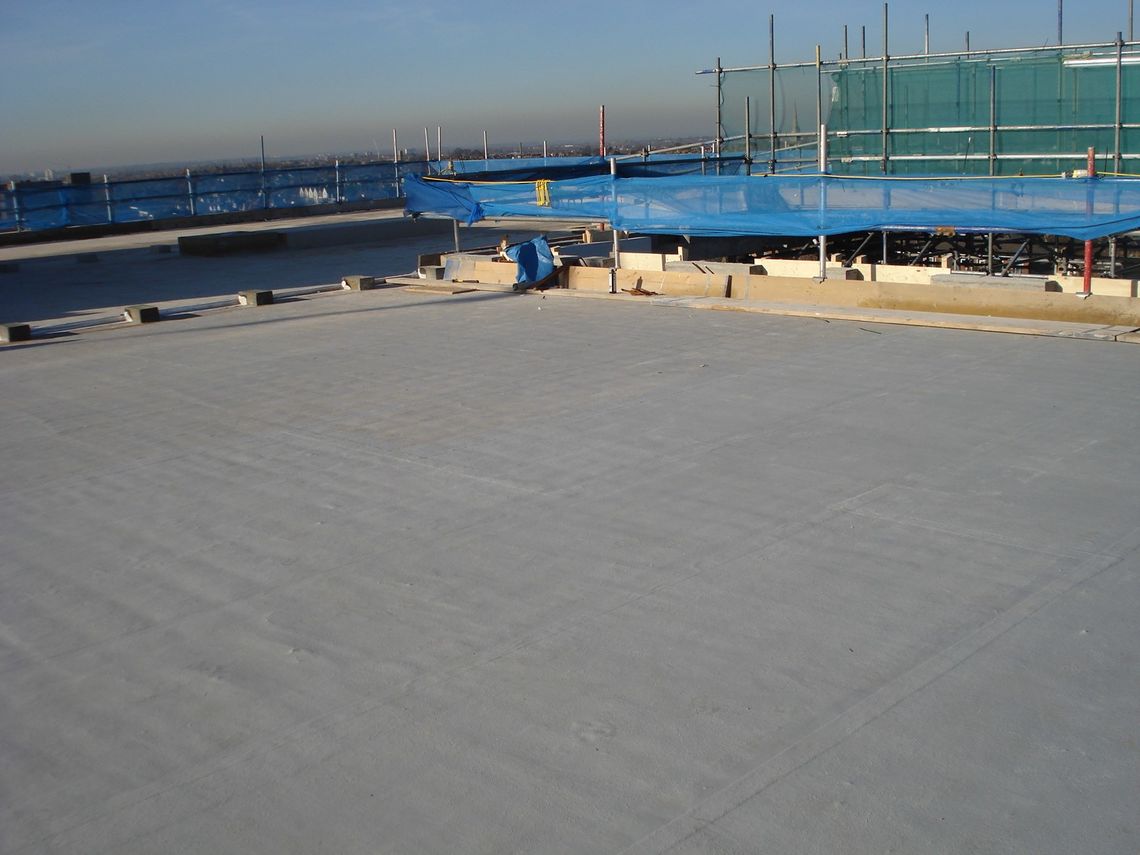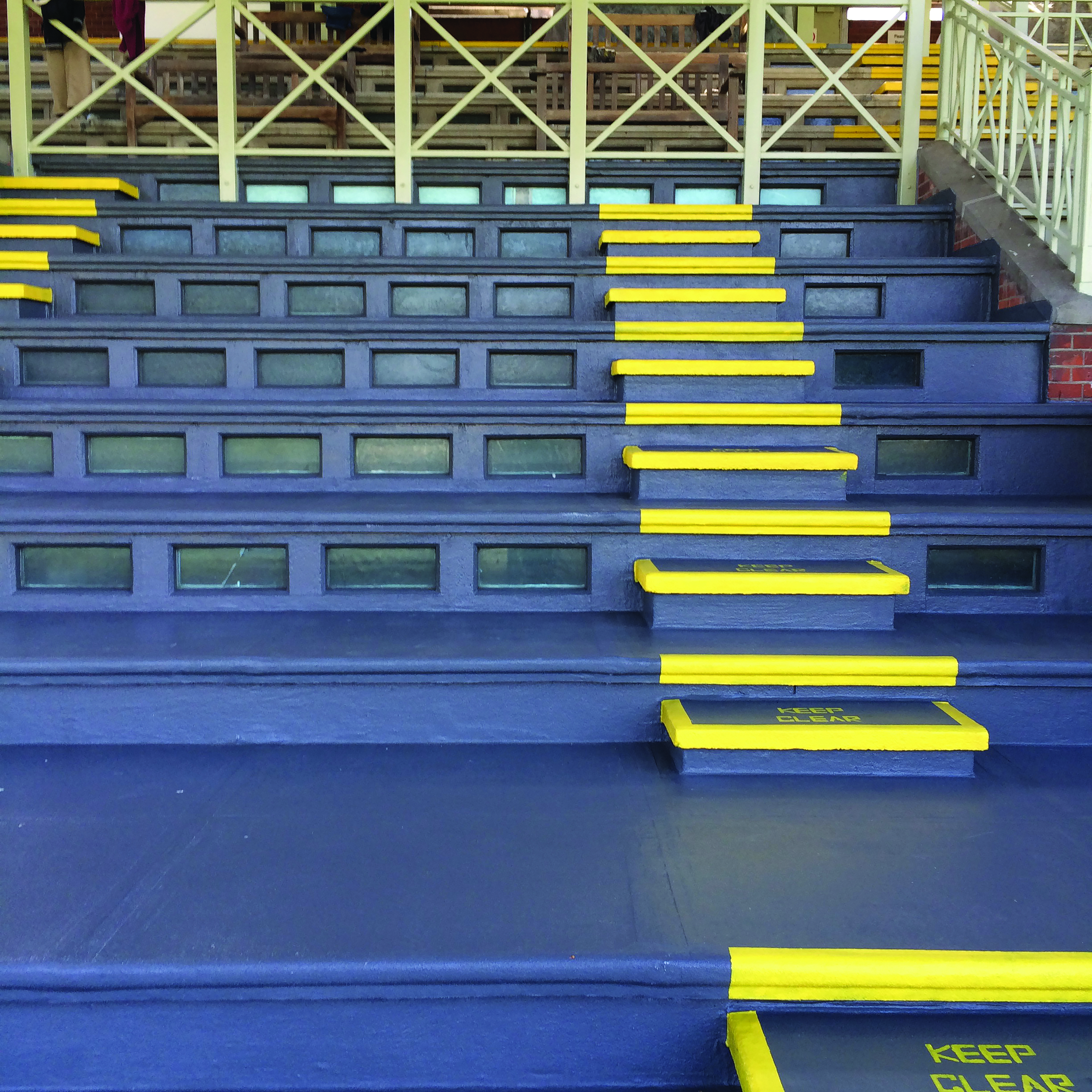WIDOPAN News
Should I use a Liquid Waterproof Coating or a Sheet Membrane?
Date Published: May 30, 2022

When it comes to sheet membranes vs liquid waterproofing, there are many reasons one may be more suitable than another.
But, time after time, we find that WIDOPAN delivers superior results to traditional sheet membrane systems.
In a previous blog, we delved into what Is Liquid Waterproofing, giving you an insight into its application and benefits, but today we’ll be directly comparing cold-applied liquid waterproofing to sheet membranes, and helping you decide which is best for your next project.
How does sheet membrane work?
Usually made from asphalt or bitumen, sheet membranes arrive at the construction site in the form of rolls.
After being manhandled into place, they are unrolled and placed on a firm, clean surface.
A blowtorch is then used to heat the underside of the membrane, turning it into an adhesive that secures to the surface below.
Sheet membranes can be unwieldy and difficult to fit in small areas or around pipes and projections from the roof.
However, it’s a cost-effective way to create a watertight surface for small projects like a shed roof.
How does liquid waterproofing work?
Although the process differs for hot and cold liquid waterproofing, WIDOPAN cold systems offer superior safety and efficacy, with less downtime.
You can apply cold fluid waterproofing with a roller or brush onto surfaces of all shapes and sizes, making it ideal for joints and detailing.
And, unlike other waterproofing systems, WIDOPAN products doesn’t require complex surface preparation before you apply them.
In fact, you can apply many WIDOPAN products directly over a range of surfaces, including sheet membranes, asbestos and painted concrete.
Our best-selling cold liquid waterproofing solution, WIDOPAN-FD, uses a two-part application process that includes a fleece membrane.
Combining the benefits of both liquid and sheet membrane systems, it produces a watertight barrier that extends the life of your metal or wooden construction by allowing vapour to pass through while remaining resistant to root growth and rips.
While the materials involved for liquid waterproofing are more expensive per m2 than sheet membrane, this figure doesn’t take into account a number of things.
Liquid waterproofing typically requires lower labour costs as it is quicker and safer to apply than a bitumen membrane.
It also has an incredibly short cure time and is available in a solvent-free formulation.
Together, these features make it ideal for keeping business running as usual when working in populated areas.
How good is liquid waterproofing?
The short answer? Liquid waterproofing is one of the most versatile and long-lasting ways to waterproof a structure.
Compared to sheet membranes, liquid applied waterproof coatings are much more versatile.
When a project requires detailing around joints and other hard-to-reach areas, liquid waterproofing’s flexibility of application is critical.
And, used in temperatures as low as -5°C, it allows work to continue even during the winter.
This makes WIDOPAN an excellent choice for both renovation and new construction projects.
Explore some of the Top Uses For WIDOPAN Liquid Resins >>




![<div class="icon"><picture><!--[if IE 9]><video style='display: none;'><![endif] --><!--[if IE 9]></video><![endif] --><img src="/application/files/4717/1775/6699/Flat_Roofs_-_WIDOPAN.svg" alt="Flat Roofs - WIDOPAN.svg" class="content-editor-image-left" height="30" style="float: left;" width="28" /></picture></div>
<div class="icon-text">
<p>Flat Roof</p>
</div>
<div class="icon"><i class="fas fa-location-arrow"></i></div>
<div class="icon-text">Wembley, HA9
<p> </p>
</div>
<div class="icon"><i class="fa fa-calendar"></i></div>
<div class="icon-text">October 2022
<p> </p>
</div>](/application/files/6416/8683/6705/Brent-House-Wembley-Referbishment-Widopan.jpg)
![<div class="icon"><picture><!--[if IE 9]><video style='display: none;'><![endif] --><!--[if IE 9]></video><![endif] --><img src="/application/files/4717/1775/6699/Flat_Roofs_-_WIDOPAN.svg" alt="Flat Roofs - WIDOPAN.svg" class="content-editor-image-left" height="30" style="float: left;" width="28" /></picture></div>
<div class="icon-text">
<p>Flat Roof</p>
</div>
<div class="icon"><i class="fas fa-location-arrow"></i></div>
<div class="icon-text">
<p>London, SE11</p>
</div>
<div class="icon"><i class="fa fa-calendar"></i></div>
<div class="icon-text">
<p>September 2022</p>
</div>](/application/files/1616/8735/3171/Vauxhall-Climbing-Centre-5-scaled.jpg)
![<div class="icon"><picture><!--[if IE 9]><video style='display: none;'><![endif] --><!--[if IE 9]></video><![endif] --><img src="/application/files/4717/1775/6699/Flat_Roofs_-_WIDOPAN.svg" alt="Flat Roofs - WIDOPAN.svg" class="content-editor-image-left" height="30" style="float: left;" width="28" /></picture></div>
<div class="icon-text">
<p>Flat Roof</p>
</div>
<div class="icon"><i class="fas fa-location-arrow"></i></div>
<div class="icon-text">
<p>London</p>
</div>
<div class="icon"><i class="fa fa-calendar"></i></div>
<div class="icon-text">
<p>September 2022</p>
</div>](/application/files/6316/8857/4311/County-Hall-2.jpg)
![<div class="icon"><picture><!--[if IE 9]><video style='display: none;'><![endif] --><!--[if IE 9]></video><![endif] --><img src="/application/files/4717/1775/6699/Flat_Roofs_-_WIDOPAN.svg" alt="Flat Roofs - WIDOPAN.svg" class="content-editor-image-left" height="30" style="float: left;" width="28" /></picture></div>
<div class="icon-text">
<p>Flat Roof</p>
</div>
<div class="icon"><i class="fas fa-location-arrow"></i></div>
<div class="icon-text">
<p>Premier Inn, Cardiff Waterside</p>
</div>
<div class="icon"><i class="fa fa-calendar"></i></div>
<div class="icon-text">
<p>January 2022</p>
</div>](/application/files/9116/8864/6522/Premier-Inn-Cardiff-Waterside-1.jpg)
![<div class="icon"><picture><!--[if IE 9]><video style='display: none;'><![endif] --><!--[if IE 9]></video><![endif] --><img src="/application/files/4717/1775/6699/Flat_Roofs_-_WIDOPAN.svg" alt="Flat Roofs - WIDOPAN.svg" class="content-editor-image-left" height="30" style="float: left;" width="28" /></picture></div>
<div class="icon-text">
<p>Flat Roof, Podium,</p>
</div>
<div class="icon"><i class="fas fa-location-arrow"></i></div>
<div class="icon-text">
<p>Barnes Village, Cheadle</p>
</div>
<div class="icon"><i class="fa fa-calendar"></i></div>
<div class="icon-text">
<p>January 2020</p>
</div>](/application/files/3016/8864/5647/Millbrook-Park-Taylor-Wimpey.png)
![<div class="icon"><picture><!--[if IE 9]><video style='display: none;'><![endif] --><!--[if IE 9]></video><![endif] --><img src="/application/files/7116/8311/7125/Green_Roof_Applications_by_Widopan.svg" alt="Green Roof Applications by Widopan.svg" class="content-editor-image-left" style="float: left;" height="24" /></picture></div>
<div class="icon-text">
<p>Green Roof, Flat Roof</p>
</div>
<div class="icon"><i class="fas fa-location-arrow"></i></div>
<div class="icon-text">
<p>London, E2</p>
</div>
<div class="icon"><i class="fa fa-calendar"></i></div>
<div class="icon-text">
<p>March 2018</p>
</div>](/application/files/3517/2787/8494/volcano-house.webp)
![<div class="icon"><picture><!--[if IE 9]><video style='display: none;'><![endif] --><!--[if IE 9]></video><![endif] --><img src="/application/files/4717/1775/6699/Flat_Roofs_-_WIDOPAN.svg" alt="Flat Roofs - WIDOPAN.svg" class="content-editor-image-left" height="30" style="float: left;" width="28" /></picture></div>
<div class="icon-text">
<p>Flat Roof, New Build</p>
</div>
<div class="icon"><i class="fas fa-location-arrow"></i></div>
<div class="icon-text">
<p>Millbrook Park, Mill Hill, London</p>
</div>
<div class="icon"><i class="fa fa-calendar"></i></div>
<div class="icon-text">
<p>January 2017</p>
</div>](/application/files/4116/8864/4346/Barnes-Village-Cheadle.jpg)
![<div class="icon"><picture><!--[if IE 9]><video style='display: none;'><![endif] --><!--[if IE 9]></video><![endif] --><img src="/application/files/4717/1775/6699/Flat_Roofs_-_WIDOPAN.svg" alt="Flat Roofs - WIDOPAN.svg" class="content-editor-image-left" height="30" style="float: left;" width="28" /></picture></div>
<div class="icon-text">
<p>Flat Roof, New Builds</p>
</div>
<div class="icon"><i class="fas fa-location-arrow"></i></div>
<div class="icon-text">
<p>Stratford, East London</p>
</div>
<div class="icon"><i class="fa fa-calendar"></i></div>
<div class="icon-text">
<p>July 2012</p>
</div>](/application/files/2416/8864/2641/EastVillage1.jpg)
